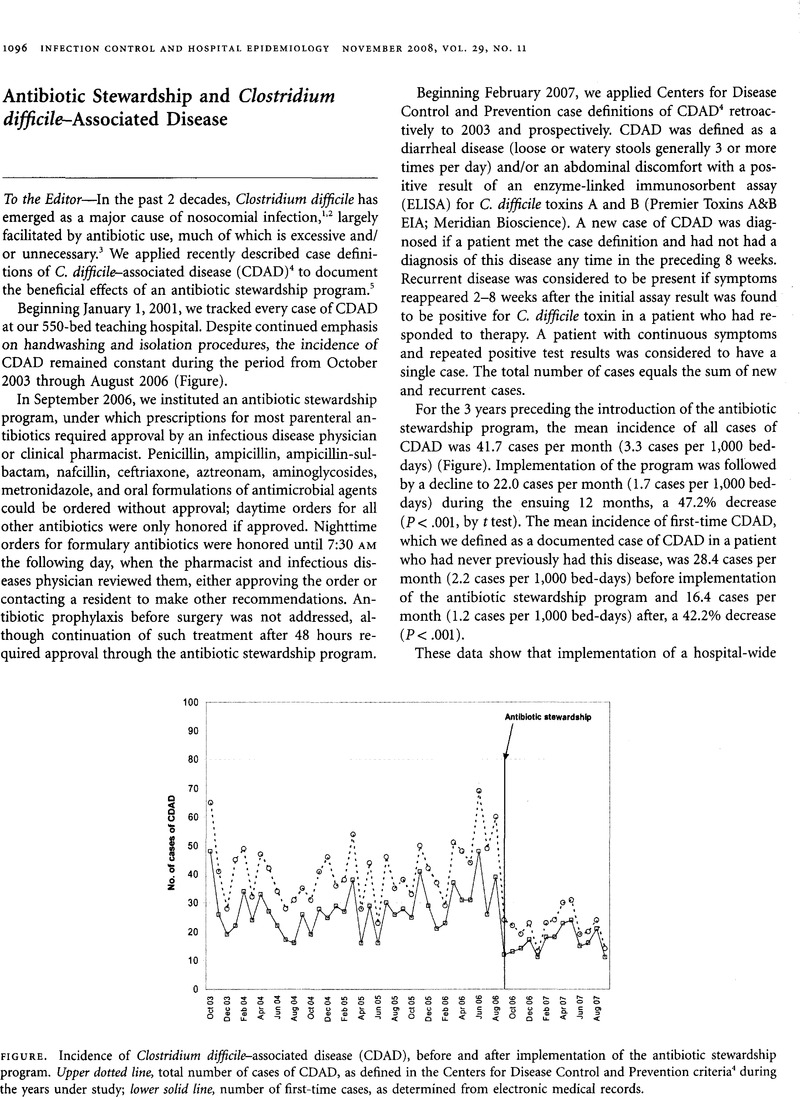Crossref Citations
This article has been cited by the following publications. This list is generated based on data provided by Crossref.
Jarvis, William R.
Schlosser, JoAnn
Jarvis, Ashley A.
and
Chinn, Raymond Y.
2009.
National point prevalence of Clostridium difficile in US health care facility inpatients, 2008.
American Journal of Infection Control,
Vol. 37,
Issue. 4,
p.
263.
Simor, Andrew E.
2010.
Diagnosis, Management, and Prevention of Clostridium difficile Infection in Long‐Term Care Facilities: A Review.
Journal of the American Geriatrics Society,
Vol. 58,
Issue. 8,
p.
1556.
Al-Tawfiq, Jaffar A.
and
Abed, Mahmoud S.
2010.
Clostridium difficile-associated disease among patients in Dhahran, Saudi Arabia.
Travel Medicine and Infectious Disease,
Vol. 8,
Issue. 6,
p.
373.
Hsu, J
Abad, C
Dinh, M
and
Safdar, Nasia
2010.
Prevention of Endemic Healthcare-Associated Clostridium difficile Infection: Reviewing the Evidence.
American Journal of Gastroenterology,
Vol. 105,
Issue. 11,
p.
2327.
Mansouri, M. D.
Cadle, R. M.
Agbahiwe, S. O.
and
Musher, D. M.
2011.
Impact of an antibiotic restriction program on antibiotic utilization in the treatment of community-acquired pneumonia in a Veterans Affairs Medical Center.
Infection,
Vol. 39,
Issue. 1,
p.
53.
Hensgens, Marjolein P. M.
Goorhuis, Abraham
Dekkers, Olaf M.
and
Kuijper, Ed J.
2012.
Time interval of increased risk for Clostridium difficile infection after exposure to antibiotics.
Journal of Antimicrobial Chemotherapy,
Vol. 67,
Issue. 3,
p.
742.
Bassetti, M.
Pecori, D.
and
Righi, E.
2013.
Annual Update in Intensive Care and Emergency Medicine 2013.
p.
51.
Davey, Peter
Marwick, Charis A
Scott, Claire L
Charani, Esmita
McNeil, Kirsty
Brown, Erwin
Gould, Ian M
Ramsay, Craig R
and
Michie, Susan
2017.
Interventions to improve antibiotic prescribing practices for hospital inpatients.
Cochrane Database of Systematic Reviews,
Vol. 2017,
Issue. 2,
Hirsch, Jamie S
Brar, Rajdeep
Forrer, Christopher
Sung, Christine
Roycroft, Richard
Seelamneni, Pradeep
Dabir, Hemala
Naseer, Ambareen
Gautam-Goyal, Pranisha
Bock, Kevin R
and
Oppenheim, Michael I
2021.
Design, development, and deployment of an indication- and kidney function-based decision support tool to optimize treatment and reduce medication dosing errors.
JAMIA Open,
Vol. 4,
Issue. 2,



